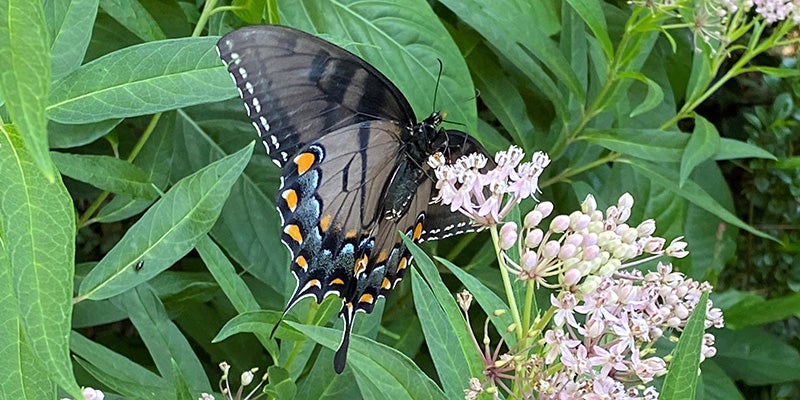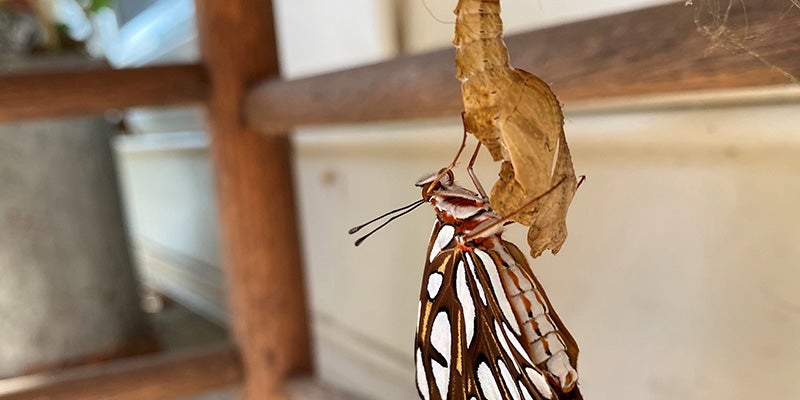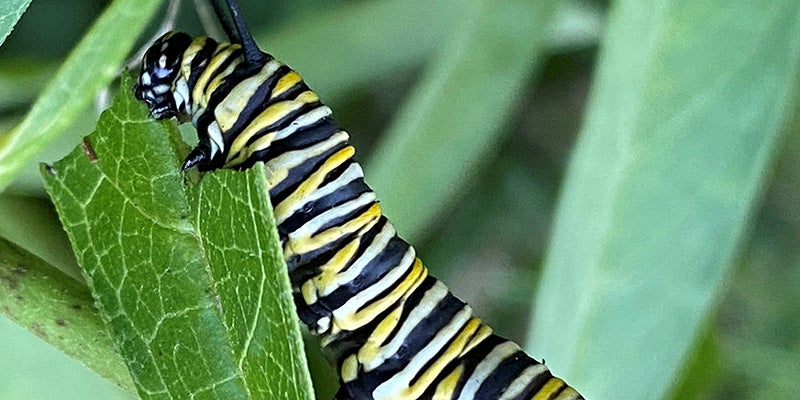September abounds with butterflies
Published 7:00 am Wednesday, September 16, 2020
Pat Drackett
Crosby Arboretum Director
Over the past few weeks, I have been receiving a bounty of mesmerizing photos of fall-blooming plants, along with a bevy of butterflies and their caterpillar and chrysalis stages. It’s certainly prime season for noticing these colorful insects, as they seem to be everywhere!
If you have never had the chance to observe the process of a caterpillar either transforming into its chrysalis, or to emerge from one, dry its wings, and fly away, I urge you to consider adding some plants that are butterfly favorites to your garden so that you can enjoy the show next year.
Currently, monarch butterflies are in their “last hurrah” stage before heading south for the high elevation oyamel fir forests in Mexico. Although I haven’t seen a large number of these well-known butterflies as I’ve experienced in previous years, there is no shortage of butterfly species to observe. Sulphur, common buckeye, swallowtail, Gulf fritillary and skipper butterflies can currently be seen feeding in the Arboretum’s south pitcher plant bog.
When designing your butterfly garden, remember to include both their host species as well as nectar plants. Keep in mind that while some caterpillars can feed on more than one type of plant, others are more specific in their selection, for example, monarch butterfly caterpillars, which only consume species of milkweed.
Native passionflower (Passiflora incarnata), also known as maypop, is another outstanding host species to plant in your butterfly garden. The perennial vine is common in the Southeastern United States and can grow up to twenty feet or more. Passionflower performs well in just about any type of soil, as long as it is well-drained.
Passionflower vine may be reduced to stubble by a feeding frenzy of Gulf fritillary caterpillars. Fortunately, the vine will usually recover from its skeletal appearance. But if you are unfamiliar with this butterfly’s larval (caterpillar) form, please don’t make the mistake of squishing these spiny black and orange caterpillars. They may look dangerous, but they will soon turn into the attractive orange butterflies.
One quick and easy way to attract butterflies to your garden doesn’t involve any gardening at all. Just whip up a “butterfly fruit cocktail”! This is an excellent thing to do with any fruit that may be past the stage where it is attractive to you. Offer butterflies a mixture of overripe and rotting fruit such as bananas, apples, cantaloupe, apples, mango, citrus and strawberries, on a low dish or plate. A bird feeder that hangs on a chain from a branch or hook is a wonderfully simple and practical way to “serve” the fruit mixture.
Butterflies such as skippers and swallowtails are attracted to mud puddles, where they siphon up salt and minerals. You can also attract more butterflies to your garden by providing them with a “puddling pool.” Fill a large plastic or terra cotta saucer with sand or gravel and keep this wet. If you water frequently or have an irrigation system, place the saucer where you can keep it filled.
At the Mississippi State University Extension website (http://extension.msstate.edu/) you will find helpful, research-based information you can trust to help you transform your yard into a haven for butterflies. On the Extension home page, just enter the keywords “attracting butterflies” in the search field to view numerous articles and publications on host and nectar plants, in addition to lists of common Mississippi butterflies.
You will also find the fact sheet, “Attracting Butterflies to Mississippi Gardens” at the Extension website, which includes lists of plant species for your garden as well as the most common butterflies found in Mississippi.
Remember that butterflies need nectar plants such as butterfly weed, black-eyed Susan, Coreopsis, ironweed and clover, as their “host” plants, the ones that they are drawn to lay their eggs on, which the larval stage, known as caterpillars, will consume once they hatch.
This Saturday, September 19 from 9:30 to 11:00 a.m., Arboretum director Pat Drackett will lead a fall botany walk. Learn about the low-maintenance native plants growing in our educational exhibits, their history and cultural uses, tips for identification and how to use them in your own home landscape. This field walk is free to Arboretum members and $7 for non-members. Reservations are required and space is limited. Please call the office at 601-799-2311 to sign up.
For more information on the Crosby Arboretum, visit www.crosbyarboretum.msstate.edu. Our public garden is open Wednesday through Sunday and located in Picayune, I-59 Exit 4, at 370 Ridge Road. Exit gates are closed at 4:30 p.m. The business office is open 9 a.m. to 5 p.m.






